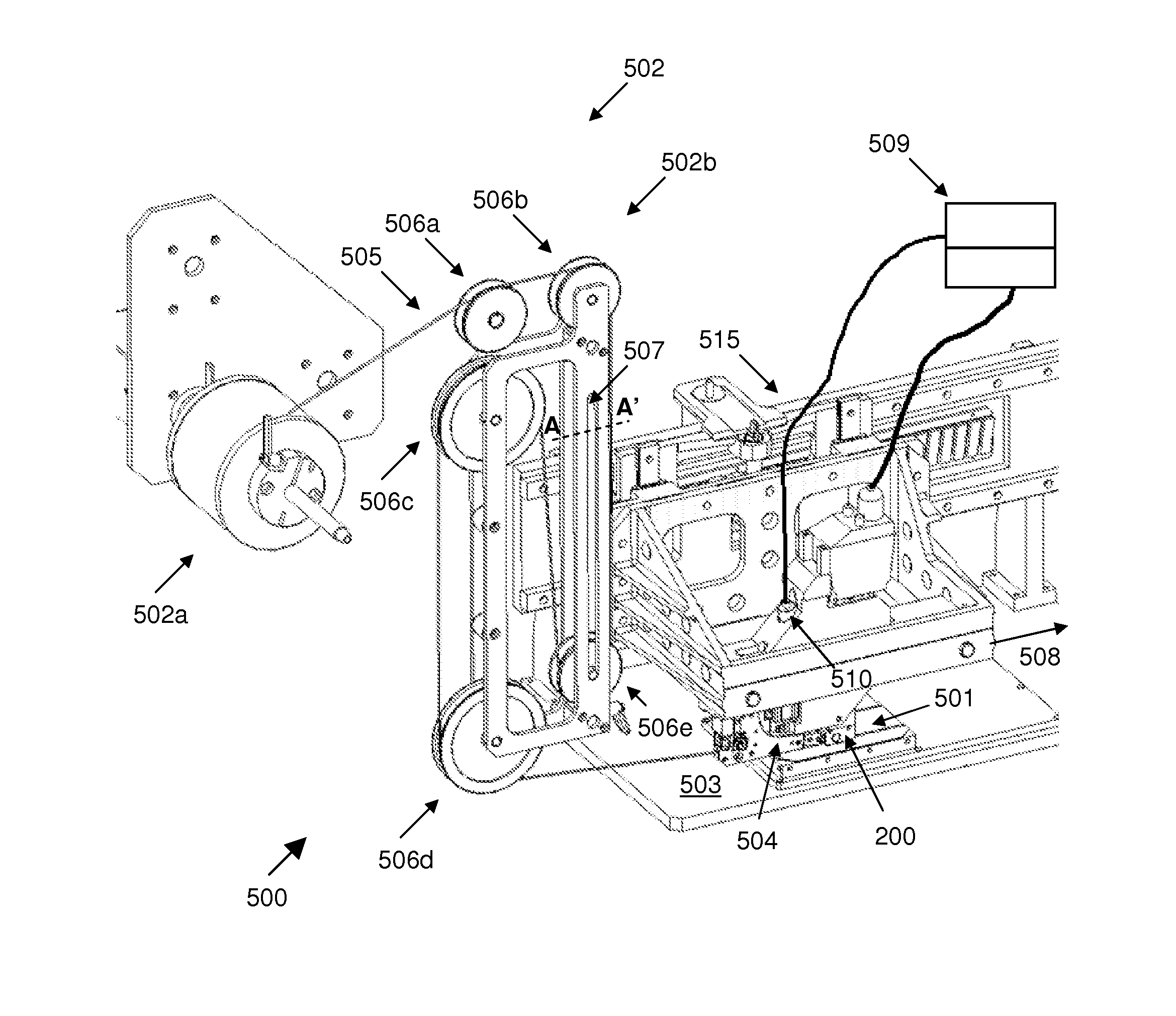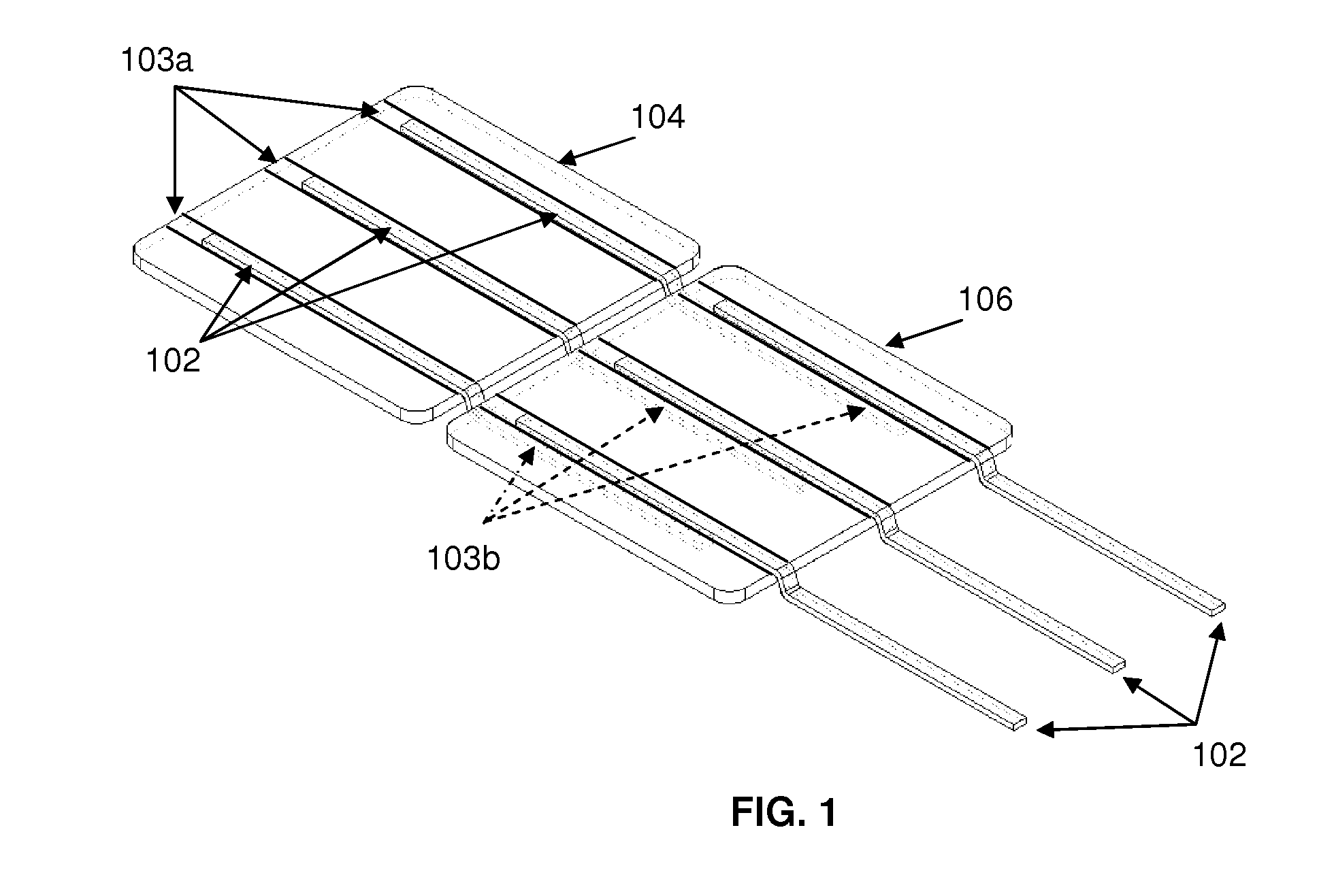Apparatus and method of interconnecting a plurality of solar cells
a solar cell and electrical interconnection technology, applied in the direction of soldering apparatus, manufacturing tools,auxillary welding devices, etc., can solve the problems of increasing the likelihood of cracks forming in the solar cell or the the cracking or even breaking of the solar cell during the cell interconnection process, and the formation of mechanical stress between. to achieve the effect of maximizing energy and power efficiency
- Summary
- Abstract
- Description
- Claims
- Application Information
AI Technical Summary
Benefits of technology
Problems solved by technology
Method used
Image
Examples
Embodiment Construction
[0022]FIG. 2a is an isometric view of a soldering device 200 according to a first preferred embodiment of the present invention, while FIG. 2b and FIG. 2c are respective side views of the soldering device 200 when viewed along directions A and B shown in FIG. 2a.
[0023]In particular, the soldering device 200 is configured to solder an electrical conductor (shown as conductive ribbons 202a, 202b) to an electrical contact (e.g. a busbar 203a on a front surface and a busbar 203b on a back surface) of a solar cell 204, so as to electrically interconnect the solar cell 204 with one or more other solar cells (not shown) to form a string.
[0024]The soldering device 200 comprises: i) a heat-generating device (shown as an inductor loop 206) for providing heat to solder the conductive ribbons 202a, 202b to the busbars 203a, 203b of the solar cell 204; ii) a roller (shown as a wheel 208 in FIG. 2b) installed within the inductor loop 206 for rolling along the solar cell 204 to press the conducti...
PUM
| Property | Measurement | Unit |
|---|---|---|
| angle | aaaaa | aaaaa |
| distance | aaaaa | aaaaa |
| width | aaaaa | aaaaa |
Abstract
Description
Claims
Application Information
 Login to View More
Login to View More - R&D
- Intellectual Property
- Life Sciences
- Materials
- Tech Scout
- Unparalleled Data Quality
- Higher Quality Content
- 60% Fewer Hallucinations
Browse by: Latest US Patents, China's latest patents, Technical Efficacy Thesaurus, Application Domain, Technology Topic, Popular Technical Reports.
© 2025 PatSnap. All rights reserved.Legal|Privacy policy|Modern Slavery Act Transparency Statement|Sitemap|About US| Contact US: help@patsnap.com



